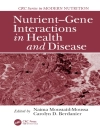In general, surgeons strive to achieve excellent results and ideal patient outcomes, however, this noble task is frequently failed. For patients, surgical complications are analogous to “friendly fire” in wartime. Both scenarios imply that harm is unintentionally done by somebody whose aim was to help. Interestingly, adverse events resulting from surgical interventions are more frequently related to system errors and a communication breakdown among providers, rather than to the imminent threat of the surgical blade “gone wrong”. Patient Safety in Surgery aims to increase the safety and quality of care for patients undergoing surgical procedures in all fields of surgery. Patient Safety in Surgery, covers all aspects related to patient safety in surgery, including pertinent issues of interest to surgeons, medical trainees (students, residents, and fellows), nurses, anaesthesiologists, patients, patient families, advocacy groups, and medicolegal experts.
Зміст
Part 1. General Aspects.- 1: Quality Assessment in Surgery: Mission Impossible?.- 2. Incidence of ‘Never Events’ and Common Complications.- 3. Cognitive Errors.- 4. Diagnostic Errors.- 5. Technical Errors.- 6. The Missed Injury: A ‘Preoperative Complication’.- 7. Non-Technical Aspects of Safe Surgical Performance.- 8. Postoperative Monitoring for Clinical Deterioration.- 9. Effective Communication- Tips and Tricks.- 10. Professionalism in Health Care.- 11. Accountability in the Medical Profession.- 12. The Role of the Surgical Second Opinion.- 13. Compliance to Patient Safety Culture.- 14. The Universal Protocol: Pitfalls and Pearls.- 15. Patient Safety in Graduate and Continuing Medical Education.- 16. Translation of Aviation Safety Principals to Patient Safety in Surgery.- 17. Handovers: The ‘Hidden Threat’ to Patient Safety.- 18. Public Safety-Net Hospitals- The Denver Health Model.- 19. Electronic Health Records and Patient Safety.- 20. Research and Patient Safety.- Part 2. The Surgeon’s Perspective.- 21. The Surgery Morbidity and Mortality Conference.- 22. Reporting of Complications.- 23. Disclosure of Complications.- 24. Surgical Quality Improvement.- 25. Surgical Safety Checklists.- Part 3. Other Perspectives.- 26. The Anesthesia Perspective.- 27. The Nursing Perspective.- 28. The Patient’s and Patient Family’s Perspective.- 29. The Ethical Perspective.- 30. Patient Safety- A Perspective from the Developing World.- Part 4. Case Scenarios.- 31. Improving Operating Room Safety: A Success Story.- 32. Management of Unanticipated Outcomes: A Case Scenario.- 33. The Preventable Death of Michael Skolnik: An Imperative for Shared Decision-Making.- Epilogue.- Appendices.
Про автора
Philip F. Stahel, MD, FACS Department of Orthopaedics, Denver Health Medical Center, University of Colorado, Denver, CO, USA
Cyril Mauffrey MD, MRCS (UK), FRCS (UK) Department of Orthopedics, Denver Health medical Centre, University of Colorado, Denver, CO, USA












